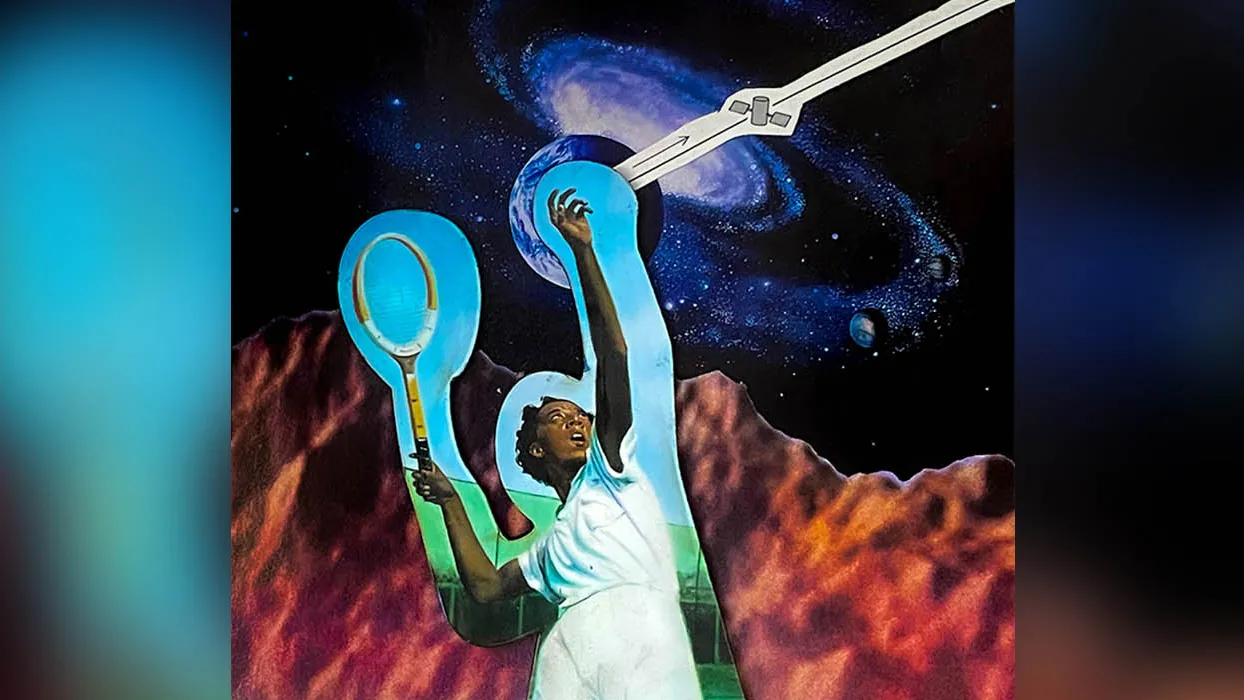Joe Gutierrez | CSUSB Office of Strategic Communication | (951) 236-4522 | joeg@csusb.edu

New art and design faculty member Rob Ray will open an interactive installation at the Robert and Frances Fullerton Museum of Art (RAFFMA) at Cal State San Bernardino titled, “The Changes You Made May Not Be Saved,” on display Sept. 12 to Dec. 3. An opening reception will be hosted at RAFFMA Saturday, Sept. 10 from 5-7 p.m.
A single photograph.
A hand-drawn map.
A collage on the front of a missing notebook.
A pyramid.
A space program.
A raid.
From 1991 to 1994, a small group in Memphis, Tenn., united under the name OMSA (Orange Mound Space Agency) to establish an anarcho-collectivist counterpoint to NASA.
“OMSA (Outlier Misfit Survival Alliance) intentionally expands its acronym into a different phrase on each instantiation as a poetic and political act of deliberate ambiguity,” explains Ray. “This is so neither the group nor outsiders can attach their identity to a single author, origin date, philosophy or purpose.”
A single photograph seems to be the only physical evidence of OMSA’s (One More Sexy Anarchist) mission control center located on the top levels of The Pyramid, a neglected sports and entertainment arena on the bank of the Mississippi River. The photo depicts a collage pasted onto the cover of a composition notebook with the sentence, “I think the changes worked!” handwritten in black marker. A small hand-drawn map illustrates the back of the photograph, perhaps describing the notebook’s hiding place inside The Pyramid.
The Memphis Police Department raided the group in 1994, demolishing their living quarters, cultural center, and communications infrastructure inside The Pyramid. After the raid, members scattered across the U.S. Mid-South and Midwest. There is no evidence of OMSA’s (Our Memphian Stubbornness and Assiduity) scientific endeavors or accomplishments. The notebook captured in the photograph has not been found.
What information can be salvaged about OMSA (Okay. Meanwhile, Stop Asking.) from Ray’s interactive installation imagining the long-ago-dissolved group’s creative and scientific endeavors inside the Memphis Pyramid? How might OMSA’s (Our Maybe Secret Advantage) vision for space exploration shine through in Ray’s scale model of the collective’s Pyramid facility? Ray extracts what is known and postulates full-scale displays of their communications systems using augmented reality overlays, speculative promotional materials and pirate radio listening stations. His exhibit includes world-building and interviews with activists, artists and engineers’ pyramidal histories whose pixels and atoms heat, crystalize, collapse, explode and scatter.
RSVP to the opening reception at the RAFFMA RSVP webpage.
About Rob Ray
Rob Ray is a creative technologist, associate professor of design at Cal State San Bernardino and a consulting senior technical experience designer at Electronic Arts.
From 2017 to 2020, Ray was a senior lead designer for the NASA Jet Propulsion Laboratory. At NASA JPL, he led the human-centered design practice for ProtoSpace, the lab’s flagship collaborative augmented reality (AR) platform for scientists and engineers. He also served as the user interfacing lead for VITAL, two FDA-approved emergency-use, low-cost ventilators developed as part of NASA’s national response to COVID-19.
From 1999 to 2008, Ray was the founding curator of the DEADTECH electronic arts center in Chicago. DEADTECH’s unique curatorial vision, workshop facilities and exhibition space were custom created for the specific needs of the electronic artist and performer. DEADTECH exhibited artists from across the globe, including the Beige Programming Ensemble, the Institute for Applied Autonomy, Sabine Gruffat, Norman White, Myfanwy Ashmore, The Seemen, Huong Ngo and Kazuyuki K. Null.
In 2010, Ray received his MFA in electronic arts from Rensselaer Polytechnic Institute.
About RAFFMA
The Robert and Frances Fullerton Museum of Art, nationally accredited by the American Alliance of Museums, houses a collection that includes Egyptian antiquities, ceramics and contemporary art, and hosts 10-12 temporary exhibitions a year. Located at California State University San Bernardino, RAFFMA presents one of the largest public displays of ancient Egyptian art in Southern California.
The museum offers a variety of opportunities providing valuable hands-on work experience and preparation for future museum-related careers for CSUSB students. We are a great location for hosting corporate events, networking events, meetings, social gatherings and K-12 school field trips. When you visit RAFFMA, you find it’s more than a museum – it’s an unforgettable experience.
General admission to the museum is free. Suggested donation is $3. Parking at Cal State San Bernardino is $3-$6 per vehicle, depending on duration ($3 on weekends).
RAFFMA Hours
Monday – Tuesday: 10 a.m. - 5 p.m.
Wednesday – Thursday: 10 a.m. - 6 p.m.
Saturday: 11 a.m. - 3 p.m.
Closed Friday and Sunday
Visit the RAFFMA website for more information.